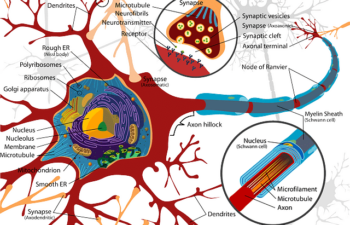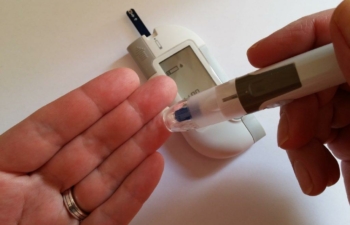According to a report published in 2017, an estimated 20 million people in the United States suffer from some form of peripheral neuropathy (PN). Since no single cause has been identified for its occurrence, conditions such as diabetes, shingles, and kidney failure play a significant role in its increase.
Let's learn more about this disease and the treatment options available to combat PN.
Understanding Peripheral Neuropathy
The peripheral nervous system (PNS) is the part of the nervous system that connects nerves from the brain and spinal cord to the rest of the body.
Peripheral neuropathy (PN) is a condition that occurs when the nerves of the peripheral system are affected or damaged. This condition is so severe that it can result in impaired sensation, weak gland or organ function, and other aspects of health.
Because these nerves connect to different parts of the body, there are different types of peripheral neuropathy that affect people. For example, mononeuropathy, mononeuritis multiplex and polyneuropathy are some of its types.
Peripheral neuropathy (PN) is diagnosed using blood tests, imaging tests, and nerve function tests (NFTs). However, some doctors also use nerve or skin biopsy to diagnose this disease. Early diagnosis of the disease helps in successful treatment of the condition.
Signs and Symptoms of Peripheral Neuropathy
The primary symptoms of PN include tingling, numbness, burning, pain, increased sensitivity to touch, muscle weakness, and nerve damage. Other symptoms of peripheral neuropathy include
- low blood pressure
- bowel incontinence
- excessive or lack of sweating
- constipation, particularly at night
- rapid heartbeat
- loss of ability to identify changes in the temperature
- muscle twitching and cramps
- double vision
- weakness in the fingers
- loss of balance and coordination
- muscle paralysis
- sharp pain, usually in the feet
- thinning of muscles
- erectile dysfunction in men
- difficulty in lifting the front part of the foot and toes
Typically, people with a family history of PN are the primary suspects for this disease. However, a variety of risk factors can trigger the condition, including obesity, diabetes, high blood pressure, vitamin deficiencies, and injury. Infections and autoimmune diseases such as herpes, chickenpox, Lyme disease, rheumatoid arthritis, and lupus can also cause peripheral neuropathy.
Treatment Options for Peripheral Neuropathy
Since PN is a disease that affects the nerves, treating the underlying cause helps to improve the condition. For example, if a patient has diabetes, curing the high blood sugar will immediately help relieve the neuropathic pain. Similarly, if a patient is an alcoholic, abstinence from the substance will help them get better.
Other than this, drugs and medications, alternative therapies, and lifestyle changes are some of the most common treatment options for peripheral neuropathy.
- Drugs and Medications
If the symptoms are mild and the disease is manageable, the doctors may suggest some drugs and medications to the patients. Some of these include
- Over-The-Counter Drugs
Acetaminophen and Non-steroidal anti-inflammatory drugs (NSAIDs) are the most commonly prescribed OTC drugs to treat mild Peripheral Neuropathy (PN). The medications help in reducing mild-to-moderate pain, swelling, fever, stiffness, and inflammation.
These drugs work by reducing the body's production of an enzyme that sends pain messages to the brain. When taken often, these medications help the body fight pain caused by inflammation and swelling. These OTC medications also provide general pain relief.
- Topical Treatments
Typically, there are two types of topical treatments used to treat a neuropathic condition, including local anesthetics and analgesics. These topical medications can be in the form of ointments, creams, gels, or lotions. Depending on the patient's comfort and preference, the doctor may prescribe any of these treatments that can be applied directly to the skin.
The substances in these medications are absorbed into the skin and provide quick relief from pain. One of the most commonly used topical medications is capsaicin cream. This topical analgesic contains chili substance that works wonders in providing pain relief.
- Alternative Therapies
Even after using painkillers and topical treatments, if the condition does not improve, then the doctors use therapies to treat the condition. Also, if the patient is suffering from moderate to acute pain, a combination of therapies and medications is useful.
Common therapies used to treat peripheral neuropathy include:
Biofeedback is a non-invasive, non-drug treatment in which electrode sensors are placed on the patient's body. These sensors then measure key body functions and help to consciously manage the physiological responses of the patient's body.
This therapy also helps in learning ways to control, reduce or prevent certain physical responses that increase feelings of stress and pain. With the help of this therapy, many patients have found relief from their neuropathic condition.
Transcutaneous electrical nerve stimulation (TENS) therapy is used to relieve patients from acute, chronic and psychogenic pain. This non-invasive treatment is also useful in providing relief from arthritis, back pain, sports injuries, neck pain, etc.
For the treatment of neuropathic pain, this therapy works by blocking pain signals from reaching the brain. In this treatment, small electrode pads are placed on the painful area of the body. Once the pads are in place, small electrical pulses are sent to the body.
The frequency of the intensity of the electrodes is increased until the patient feels the strong, but comfortable, effect on the body. With a few sessions of this therapy, significant pain relief can be experienced. In addition, TENS therapy is also useful in stimulating the production of endorphins, which are the body's natural painkillers.
- Ergonomic Casts or Splints
Generally recommended for the arms, hands, feet and legs, this therapy is useful for patients suffering from muscle weakness due to peripheral neuropathy. These splints or casts provide the necessary support to the affected part of the body, thereby reducing pain.
For example, a splint or cast can keep the affected wrists in a proper position while the patient sleeps. Ergonomic casts or splints can also relieve the pain of carpal tunnel syndrome.
This traditional yet useful therapy has proven to be one of the best treatment options for peripheral neuropathy. This therapy involves inserting needles into pressure points on the patient's body to stimulate the nervous system. This releases endorphins, the body's natural painkillers, in the spine, muscles and brain, resulting in reduced pain.
Making some routine lifestyle changes to prevent the condition from worsening is another simple and important treatment option.
- Avoid alcohol.
- Follow a healthy diet.
- Never skip the exercise.
- Keep the floors uncluttered to avoid tripping.
- Install handrails and use bath mats in the bathroom to avoid slipping.
- Check the temperature of the water with the elbow.
- Always keep on shoes to protect the feet.
- Avoid staying in one position for too long. Take frequent breaks and ensure every part of the body is moved equally.
Despite having several treatment options in hand, professional consultation is a must to cure any disease of the root. Therefore, before starting any treatment, always consult a doctor for faster recovery.
Contributor Bio – The blog is presented by Sharda Hospital. Sharda Hospital is one of the largest super specialty hospitals in Delhi National Capital Region (NCR).







